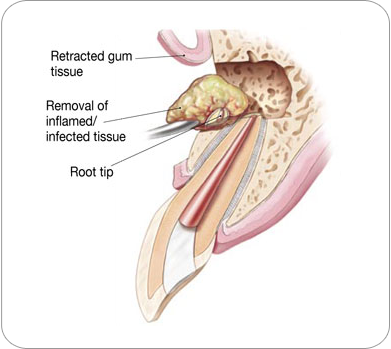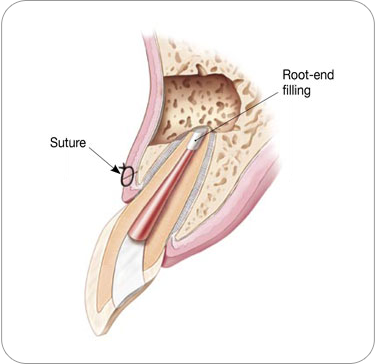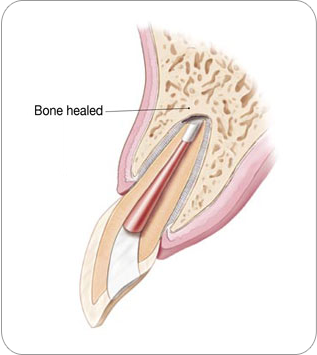Endodontic Surgery
Endodontic Surgery
Endodontic surgery is the last resort when endodontic treatment fails to provide a lasting solution. Before we talk about the features of an endodontic surgery, it is important to understand first how the nonsurgical (endodontic treatment) version works.
The inflammation or infection of the pulp makes a root canal procedure necessary. This condition may be because of a hard knock on the tooth, an extensive decay, or frequent dental treatments. With endodontic treatment, the endodontist evacuates the damaged pulp, and the pulp cavity cleaned and filled with a sealant to seal the root canal and save the tooth.
This usually takes care of the situation, but there are cases where the solution lies only on a surgical procedure.
Why would I need endodontic surgery?
Endodontic surgery helps in solving many endodontic conditions. These conditions include:
Diagnosis: There are times when it may be hard to detect the cause of a problem despite the presence of frequent symptoms. Even tiny cracks on the tooth may escape detection with x-rays. The Endodontist may resort to surgical intervention in order to diagnose the problem.
Calcification: During the time the Endodontist cleans and shapes the pulp cavity after pulp evacuation, there may be the presence of calcium deposits, which may prevent a thorough cleaning of the root canals. The tiny instruments used for the cleaning and shaping may not be strong enough to scrape off these deposits. Endodontic surgery provides an effective way to reach and clean the ends of the root.

Bone structure: When the bone surrounding the root or even the root surface is bad, the next option is often surgery. Root-end resection or apicoectomy is the most common of all the different types of endodontic surgical procedures. Apicoectomy helps solve the issue of tooth end inflammation after a root canal treatment.
Steps in Apicoectomy Procedure
The surgeon makes an incision in the gum tissue close to the tooth, in order to gain access to the bone structure beneath the root. The surgeon also removes the root end and all other infected tissues.
The surgeon next inserts a small quantity of sealing material to seal the up the root canal end. For proper healing, the gum incision is stitched or sutured.
The healing process completes after some months when the bone structure surrounding the root end has healed.
Is the procedure painful?
Although you may experience some discomfort or swelling of the gums during the healing process, this is normal, but generally, the procedure is comfortable because of the use of local anesthetics. Your surgeon will give you some pain-relieving drugs to ease your comfort.
Who performs an endodontic surgery?
Your Endodontist will refer you to an oral surgeon for an endodontic surgery procedure. Oral surgeons have the right experience and their surgical tools can offer even sedation options if the need arises.
What are the indications of a successful surgery?
In as much as there are no guarantees with respect to surgical interventions, the recommendation for a surgical alternative by your Endodontist and dentist means that it is the best treatment option for you. Before we carry out a surgical procedure on you, we will discuss the procedure in detail with you so that you will know what to expect.
Are there any other alternatives to endodontic surgery?
Well, if surgery fails to solve your endodontic problems, the only other option left is tooth extraction. A bridge, implant, or a detachable partial denture will then act as a replacement for the extracted tooth. These replacements provide support to other teeth nearby, and promote the restoration of normal chewing ability.
The use of these replacement options involve a surgical procedure on the other healthy teeth near the tooth gap, therefore, endodontic surgery remains the cheapest and most effective option available for a healthy dental life in this case.
Technology has evolved so much that tooth replacements are now very effective. However, no technology can be as perfect as natural teeth. Saving your tooth is a huge investment, and you can go ahead to enjoy healthy, natural teeth for years through an endodontic surgery.
Dentkos Endodontics
16626 Pearl Rd
Strongsville, OH 44136
Contact
Phone: (440) 268-8445
Fax: 440 268 8443
Email: [email protected]





